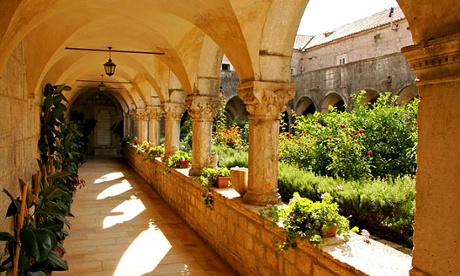
Just through the Pile Gate, one of two grand entrances on the western side of Dubrovnik’s old town, is what looks like yet another church. This is no slight; all 17 of the churches within the city walls are beautiful – it’s just that with there being so many, it’s easy to think it doesn’t matter if you give this specific one a miss. But don’t. These bleached white walls actually belong to the city’s Franciscan monastery, built in 1317 by monks whose mission was to heal the sick. To help do this, they set up an apothecary (which also brought the monastery a substantial income), and planted a medicinal garden, featuring large palms and an array of herbs, including sage and mint.
That garden still exists today, and the apothecary is still a working chemist’s shop (the third-oldest in the world), part of the Old Pharmacy Museum. Along with prescription medicine, it also has frightening medical implements dating from the Ragusan era (1358-1808) on display.
For a small entrance fee, visitors can stroll around the garden, deciphering the inscriptions carved on the worn marble floor tiles and admiring the lush foliage. This is still an active monastery, home to 10 nuns and one monk, so visitors might come across them, walking the wide corridors to mass.
• Stradun 2, adult £3, child £1.50, open daily 9am-5pm

